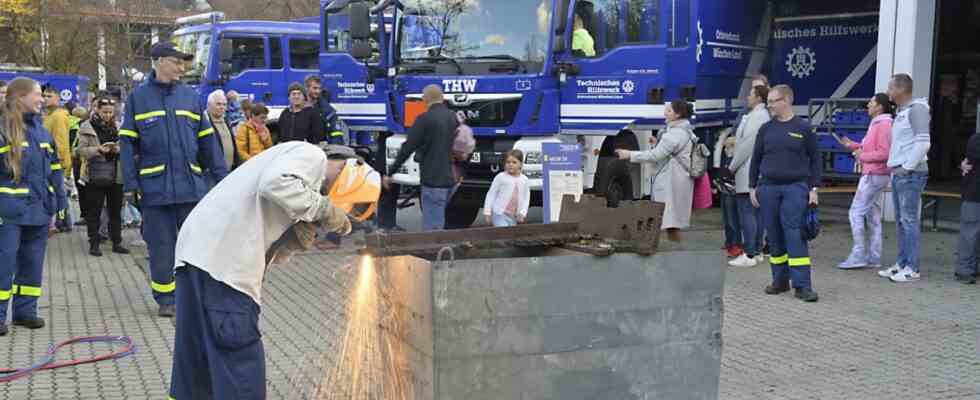For a long time, many people were probably unaware of how dependent everyday life is on electricity. A so-called blackout would not only mean that it would get dark – among other things, the water supply would no longer be guaranteed and the communication networks could collapse. Many experts now consider it rather unlikely that there will actually be a long-lasting, widespread power failure in winter. And yet: “You can say for so long that a blackout is unrealistic. But when the time comes, you still expect help,” says Arne Seifert, commander of the Haar volunteer fire brigade. Preparations are important in any case, “we are already thinking about what to expect”. Interested parties were able to see for themselves that the district is well equipped with its aid organizations on Saturday at the open day in the Haar disaster management center.
As early as 1984, the Haar fire brigade moved into the quarters on Vockestraße after the old fire station had been severely damaged by a hailstorm. A few years later, the plant fire brigade of the neighboring Isar-Amper-Klinikum, the Technical Relief Agency (THW) and the ABC-Zug München-Land followed. The latter is a specialized unit that knows how to protect yourself and what to do in the event of accidents involving nuclear, chemical and biological agents. The organizations have been sharing the facility on Vockestrasse for years.
Because of the Russian war of aggression in Ukraine and the resulting threats, civil protection is more present in the minds of many people than ever before. However, the center organized the open house well before the current energy crisis. For the first time since the beginning of the pandemic, visitors to the base in Haar were able to find out more about the work of the helpers, gain insights into their work and observe exercises up close. “We want to show how efficient we are,” says Andreas Frank, local representative of THW München Land.
When the elevator gets stuck
The large vehicle hall of the fire brigade is teeming with people this afternoon. Between the neatly lined-up companions stand emergency services who explain the tools and equipment to the visitors. The doors of all the cars are wide open, giving a clear view of the interior: carefully rolled up yellow hoses can be seen in the fire engine vehicle. Everything is neatly labeled, and there is also a sign that says “elevator tool”.
Andreas Kiesewetter is standing next to a bright green protective suit that the Munich-Land ABC train has in its equipment.
(Photo: Claus Schunk)
Such a deployment would be classic in the event of a blackout, says Commander Seifert. Again and again, people have to be freed from stuck elevators after power failures. Accidents could also increase in the first few hours, for example due to failed traffic lights. According to Seifert, deployments would initially not be a problem for the fire brigade even in the event of a blackout: “We work independently with our vehicles, so we have our own electricity with us.” However, if a power failure lasted several days, it could also be difficult for the helpers.
Andreas Frank from THW assesses the situation in a similar way: “Scenarios like this were unthinkable in the past, which is why we have not yet been designed for them.” You can use generators to support the emergency power supply in critical infrastructure facilities – for example in hospitals or old people’s homes – “but we wouldn’t be able to cope with a widespread power failure either”. It is all the more important to make the necessary preparations now in order to be able to react quickly in an emergency. The district office supports the aid organizations, says Frank.
When it comes to civil protection, the district has a decisive advantage with its center, of which both Seifert from the fire brigade and Frank from THW are convinced. “You know each other, the lines are short and you can coordinate many things directly,” reports Seifert. Frank adds: “Even if public communication fails, an exchange is still possible here.” Due to the physical proximity, you could also support each other quickly and easily. “The interaction between the organizations in the district is excellent,” praises Frank.
The interest of the population in the topic of civil protection is definitely there, as shown by the large crowds at the open day – Frank has the impression that more visitors came than before the pandemic. In his own words, fire brigade commander Seifert hopes that the event can also help to calm people down in uncertain times: “People can see here that we are well positioned.”

